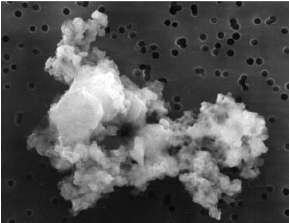Recent research suggests that cosmic dust, essential for the formation of planets and asteroids, may possess a greater level of porosity than previously understood. A study led by Alexey Potapov from Friedrich Schiller University Jena indicates that this newfound “sponginess” of space dust could significantly impact the chemistry occurring within the clouds of material that populate our universe.
Understanding the porosity of cosmic dust is crucial because it influences the dust’s surface area, which plays a vital role in chemical reactions. For instance, the formation of hydrogen molecules (H2) is more efficient when the dust is porous rather than compact, as traditional models have suggested. The study highlights that more porous dust can effectively “trap” volatile substances, such as water, which may be crucial for the development of protoplanetary bodies, including early Earth.
Types and Evidence of Porosity
The research distinguishes between two types of porosity in cosmic dust. “Intrinsic” porosity refers to intentional holes within the dust material, while “extrinsic” porosity involves gaps created between particles due to gravitational forces. The authors support their findings with four key pieces of observational evidence.
Firstly, samples collected from various space missions, such as Stardust, which launched in 1999, and Rosetta, launched in 2004, provided significant insights. Both missions examined comets and their surrounding dust, revealing a mix of compact and porous dust, with some samples exhibiting porosity levels as high as 99%.
Secondly, remote observations of the interstellar medium’s dust spectra have established lower limits on dust porosity, with data from the ALMA study of HL Tau suggesting porosity around 90%. The authors note that this figure could be lower due to repeated collisions among dust particles.
Thirdly, experimental growth of synthetic dust in laboratory settings has shown that the deposition of gas and dust, created through laser ablation of rocks, yields highly porous materials. This aligns with the findings from Rosetta and Stardust, which also showed extensive porosity.
Finally, simulations that model both particle collisions and the atomic structure of dust support the idea of high porosity, particularly in the context of “hit-and-stick” models that effectively create extrinsic porosity.
Implications for Cosmic Chemistry
The implications of these findings extend beyond academic interest; they could reshape our understanding of cosmic chemistry. The presence of internal micropores in intrinsically porous dust could allow for the preservation of water molecules, reducing the likelihood of sublimation in the harsh environment of interplanetary space.
While the evidence for highly porous cosmic dust is compelling, the authors caution against definitive conclusions. They emphasize the need for further data to ascertain whether this spongy structure is common throughout the universe. The ongoing exploration of cosmic dust continues to unveil the complexities of our universe, prompting questions about the fundamental materials that constitute celestial bodies.
For those interested in the visual representation of this research, there is a suggestion that future imagery of phenomena like the renowned Pillars of Creation might be updated to reflect these new understandings of dust composition. The quest to unravel the mysteries of cosmic dust remains an exciting frontier in astrophysical research.
